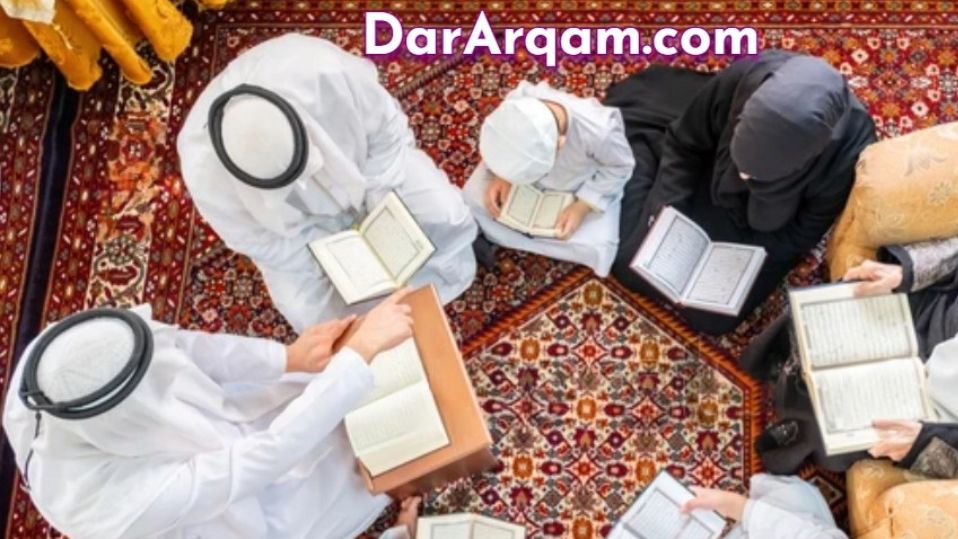Noorani Qaida is the most effective method to teach children the fundamentals of Quranic reading. For kids aged 3 to 6, it lays a strong foundation in Arabic letters, sounds, and pronunciation. At this age, children are naturally curious and eager to learn, making it the perfect time to introduce essential Quranic skills.
Table of Contents
- 10 Tips to Teach Noorani Qaida to 3 to 6-Year-Old
- 1. Create a Daily Noorani Qaida Learning Schedule
- 2. Use Colorful Noorani Qaida Books
- 3. Start with Basic Quranic Arabic Letter Recognition in Large Print Qaida
- 4. Teach with Repetitions and Rhymes
- 5. Focus on One Concept Per Lesson
- 6. Teach Harakaat Using Singing Patterns
- 7. Use Noorani Qaida Apps to Make it Playful for the Child
- 8. Break the Lessons Into 20-minute Small Sessions
- 9. Reward the Child with Completion of Each Chapter
- 10. Enroll the Child in an Online Noorani Qaida Course
- What Age Can Your Child Start Noorani Qaida?
- Conclusion
1. Create a Daily Noorani Qaida Learning Schedule
Consistency is key. Design a daily schedule that fits your child’s routine. Keep sessions short (15–20 minutes) and include breaks for play or snacks. Dar Arqam, our tutors emphasize the importance of reviewing previous lessons to build confidence and ensure steady progress.
2. Use Colorful Noorani Qaida Books
Colors make learning interactive and fun. Noorani Qaida books use colors to highlight Tajweed rules, such as red for Madd (prolongation) and green for Ghunna (nasal sound). Introduce these gradually and pair them with praise to keep your child engaged.
3. Start with Basic Quranic Arabic Letter Recognition in Large Print Qaida
Begin with large-print Qaida books to help children focus. Teach one letter at a time, using playful activities like tracing letters in sand or drawing them on a whiteboard. This approach is a cornerstone of the teaching methods at Dar Arqam.
Start your child’s Noorani Qaida journey today4. Teach with Repetitions and Rhymes
Repetition builds memory, and rhymes make learning exciting. Use catchy phrases like, “Alif, Baa, Taa, let’s read and play!” to keep your child engaged. Encourage clapping or hand movements to make the lesson feel like a game.
5. Focus on One Concept Per Lesson
Teach one concept at a time, such as Harakaat (short vowels), to avoid overwhelming your child. Use flashcards or small activities to reinforce learning. This step-by-step method is highly effective and recommended by Dar Arqam tutors.
6. Teach Harakaat Using Singing Patterns
Turn learning into a musical experience by creating simple Islamic songs for Fatha, Kasra, and Damma. For example, sing “Alif-Fatha-Ah, Alif-Kasra-Ih, Alif-Damma-Uh” in a rhythmic tone. This method makes memorization fun and engaging.
7. Use Noorani Qaida Apps to Make it Playful for the Child
Interactive apps like Noorani Qaida Pro or Tarteel Noorani Qaida make learning playful. These apps offer games, quizzes, and animations that help children learn faster. Combine them with physical books for a balanced approach.
8. Break Lessons into 20-Minute Sessions
Young children have short attention spans. Keep lessons to 20 minutes and focus on one concept per session. Use tools like flashcards or whiteboards to maintain interest. At Dar Arqam, we emphasize the importance of short, focused lessons for effective learning.
9. Reward the Child with Completion of Each Chapter
Motivate your child with small rewards like stickers or Quran storybooks after completing each chapter. Praise their efforts and create a reward chart to track their achievements. This builds excitement and encourages consistency.
10. Enroll in an Online Noorani Qaida Course
For structured and expert guidance, enroll your child in an online Noorani Qaida course. At Dar Arqam, we offer personalized attention, interactive lessons, and progress tracking to ensure your child learns Tajweed correctly and effectively.
At What Age Can Your Child Start Noorani Qaida?
Children aged 3-6 years are at the ideal stage to start Noorani Qaida. Their sharp memory and curiosity make it easier for them to grasp new sounds and patterns. Starting early builds a strong foundation in Arabic pronunciation and Tajweed, nurturing a lifelong connection to the Quran.
Conclusion
Teaching Noorani Qaida to young children can be a rewarding experience with the right approach. By following these tips and enrolling your child in a structured program like the one offered by Dar Arqam, you can ensure they develop a strong foundation in Quranic reading. Start their journey today and watch them grow into confident Quran learners.
Start your child’s Noorani Qaida journey todayDar Arqam is a globally recognized platform for learning the Quran, Arabic, and Islamic Studies. It is renowned for its excellence. As a leading online Quran institute, we provide personalized one-on-one sessions with expert native tutors, ensuring high-quality education for learners of all levels.

